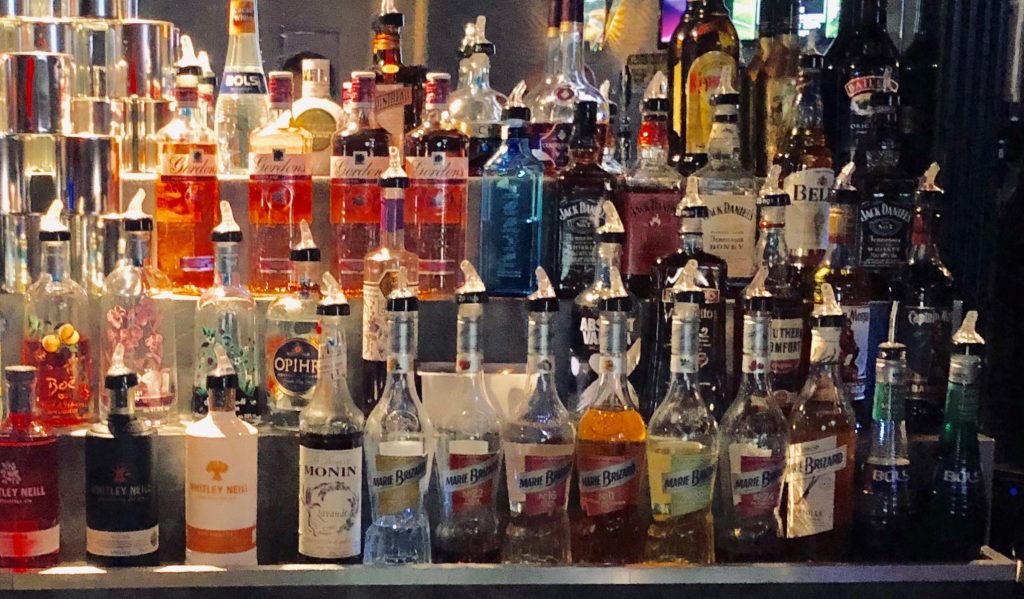[February 2019] If you are a keen reader of all things Gin, you may have seen the various tweets/blogs/articles around the use of the word Gin to describe a bottle of booze (For the purposes of this post, I am going to ignore the “Gin” named products such as soap, shampoo, chocolate, tea etc). Firstly, let’s go to the rule book. How have the lawmakers chosen to define Gin?
Extract from: REGULATION (EC) No 110/2008 OF THE EUROPEAN PARLIAMENT AND OF THE COUNCIL (found HERE)
(a) Gin is a juniper-flavoured spirit drink produced by flavouring organoleptically suitable ethyl alcohol of agricultural origin with juniper berries (Juniperus communis L.).
(a) Distilled gin is:
(a) London gin is a type of distilled gin:
(i) obtained exclusively from ethyl alcohol of agricultural origin, with a maximum methanol content of 5 grams per hectolitre of 100 % vol. alcohol, whose flavour is introduced exclusively through the re-distillation in traditional stills of ethyl alcohol in the presence of all the natural plant materials used,(ii) the resultant distillate of which contains at least 70 % alcohol by vol.,(iii) where any further ethyl alcohol of agricultural origin is added it must be consistent with the characteristics listed in Annex I(1), but with a maximum methanol content of 5 grams per hectolitre of 100 % vol. alcohol,
(iv) which does not contain added sweetening exceeding 0,1 gram of sugars per litre of the final product nor colorants,
(v) which does not contain any other added ingredients other than water.
- Minimum alcoholic strength by volume (ABV): 37.5%
- Uses Juniper Berries
- Taste is predominantly that of juniper
So we have our definition. Easy right? Well, it should be. With the continuing growth of Gin sales, businesses see an opportunity to tap into this huge market (est £1.9 billion in the UK for 2018).
Often starting with a London Dry. But not everyone likes London Dry, so how does one expand sales into an audience that on the surface ignores gin or perhaps wants more than “just gin”? Let’s consider some options: –
Make a Vodka? Despite it still outselling Gin in the UK on-trade last year, Gin is the growth, market and perhaps also offers a wider choice for makers and intern, consumers?
Whisk(e)y? This takes times. The rules are also clear here, maturation of the final distillate for at least three years in wooden casks, so that’s a slow burner. In fact, many gins currently available are made by wannabe/existing whisky distillers waiting for their lovely products to mature.
Sloe Gin? That’s good but at >25% ABV and loaded with Sugar, it’s a liqueur and one I make and enjoy. It’s a great addition to the range and some distillers have made excellent examples (Plymouth being a fab choice) but in terms of shelf appeal, not quite there.
Pink Gin? Okay, we are now getting closer to the challenge. Pink gin is new. Okay it’s not. It is current. Originally Pink Gin was a cocktail made from Gin and bitters. Simple, quick and bloomin’ delicious. (For more details, the Gin Foundry wrote an excellent post about how to make and a little history HERE)

Whilst not a new phenomenon, last year showed aggressive growth in sales (up 751% on 2017) and is perhaps likely to become the gin of choice for many in the summer of 2019. “Pink Gin” as titled on the supermarket and bar shelves is a Gin that has is flavoured with ingredients to make it pink. Rarely bitters. Often with strawberry, raspberry, cherry to name but a few and perhaps sweeter that your traditional London dry. But often losing that dominant Juniper flavour that is required by law. Now, before you say “I know this or that brand makes an amazing pink gin that is Juniper forward” hold your horses. I know there are some superb examples available but walk into a supermarket and it is likely that they will be harder to find. If you know your onions you will probably already have a bottle or know where to find one.
The next option on this road is flavoured gin. And boy oh boy have there been some imaginative flavours come to market. Bubble gum, Cake, Coconut, sparkles, shimmers, Biscuit etc. etc. Now, again, there are some that have these as elements and you can still taste the juniper and meet the 37.5% ABV rules. But many do not. They are often low in ABV, full of sugar and have zero Juniper flavour.The traditionalists (Consumer and makers) suggest these are not gins. The brands/makers would argue that they are. Law implies they are not. The consumer does not care. And that’s perhaps the point. Market forces, either by consumer lead trends or a natural progression to land grab more of the market, produces products the consumer will enjoy. That’s capitalism. Or business. People, big and small, looking to earn a buck. And why should we stand in their way? Seems reasonable for someone to produce a product that others will buy. We all pretty much adhere to that. Want a coffee? Walk into a coffee shop, handover your hard earned cash, walk out with a coffee. Simples. Or is it?
Allow me to digress for a moment (more than I have already you say?). Let’s take a simple example. I order a cook book online. In the description it clearly states it a hardback but when it arrives it’s in fact a paper back. Same recipes. Same cover. Same author. But not what was described. Seem fair? No and I would have the right to return it under the distant sellers laws and that would be that. As a consumer I would expect to have a book that was the same as the one I ordered. It may do most of the things I want but it is not what I ordered. It’s a paperback. Not a hardback. They are different. Similar but different.
So now let’s try that with gin. ANY bottle marked as gin has to meet the rules. So let’s take a bottle of made-up gin. On the label it had GIN front and centre with perhaps, but not always, Liqueur written nearby. It’s got fruit and things that will give flavour and colour. It’s sweeter and is 20% ABV.
Is this gin? Well the base spirt may have been at some point but as far as its current profile, it is not. It’s a fruit based liqueur. Wait. Is that not just like Sloe Gin? Same thing, different fruit? Perhaps, but Sloe Gin is firstly a minimum of 25% ABV and actually has its own definition in law. So this is where you may say I am just being pretentious or splitting hairs. Maybe. But if I order a gin I would hope it to be gin.
If I buy a bottle of Champagne, I know what I am getting. There may be variances from brand to brand, vintage to vintage but I have a clear understanding of what will be in that bottle. If I order a Melton Mowbray pork pie. I know what I am getting. If I order London Dry gin, I know what I am getting. But adding just GIN to a bottle of something no longer guarantees it to be “gin” as defined by EU Law. Remember, 37.5% and taste predominately of juniper etc.
Taste is subjective. I recently purchased a pink gin that I was told was juniper dominant. I could not taste it. Not even subtly. I asked others to taste it. They could not get the juniper. It was not gin. Now, if it was called something else, my expectation would be different. Have you ever been given a cup of coffee being told it was tea? It’s the same thing. Nothing wrong with either but expectations were that it was going to be tea. I like “Pink Gins” and “Gin Liqueurs” and many of the other Gin based spin offs but I want to know what I am getting and adding Gin to the title does not guarantee that.
Wow, that’s a lot of words and not getting to the point? So let me try.
For me it should be simple. Call it what it is. But it is not that simple. Whilst there is money on the table, the rules will be either stretched at one end or completely broken at the other. What’s the answer? I am not sure but I feel it is down to the industry to make this right. Don’t blame the consumer. If you want to drink something that is made from fairy toe nails, flavoured with peaches, chilli ice cream and have gold flecks in it, fill your boots. It is your choice and I embrace the fact we have that choice. However, don’t call it tea when you are drinking coffee.
Finally, a word to the gin evangelist. I am seeing more and more negativity towards the consumers drinking the “not gin” gin. I applaud your passion and agree with your frustration but don’t troll the consumer. Focus on the distillers, the brands, the marketers and the law makers. Educate the consumers, hopefully like this badly written post, and work with the gin makers who want the same thing. There are plenty of them.
Remember the rules. At least 37.5% ABV and should have a taste that is predominantly of juniper. Otherwise it is not gin. Does not mean it will taste bad. It is just not gin.
Now I’m off to resume my normal service of sharing all things gin, mainly on Instagram (here) and Twitter (here) and enjoying the process.
Thanks for reading.
Marcus

Great post Marcus! I think it’s very well written and great points – don’t blame the consumer, but perhaps we should educate them a little? What definitely needs to happen is transparency and adherence to revaluations on labelling products.
Thank you. Agreed. It’s a first world problem but one that needs some momentum 🙂